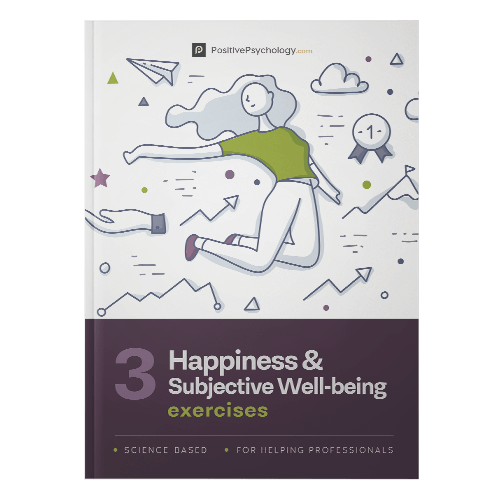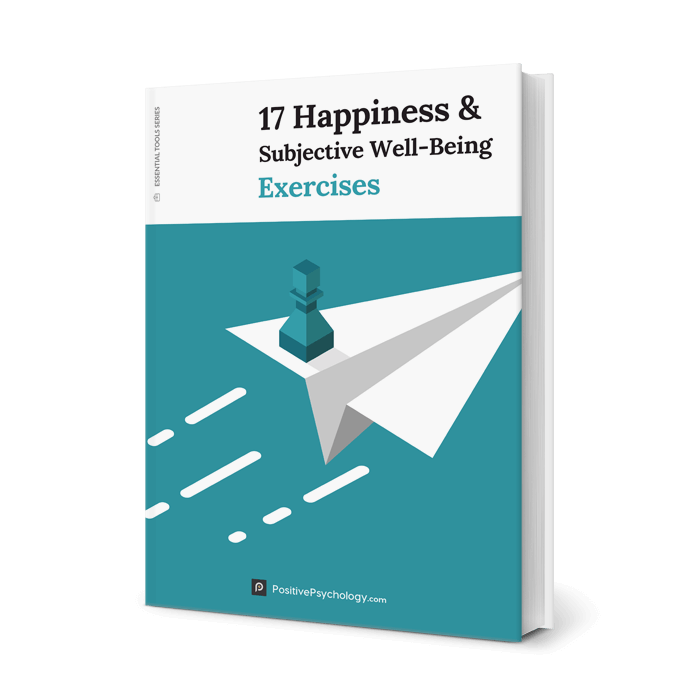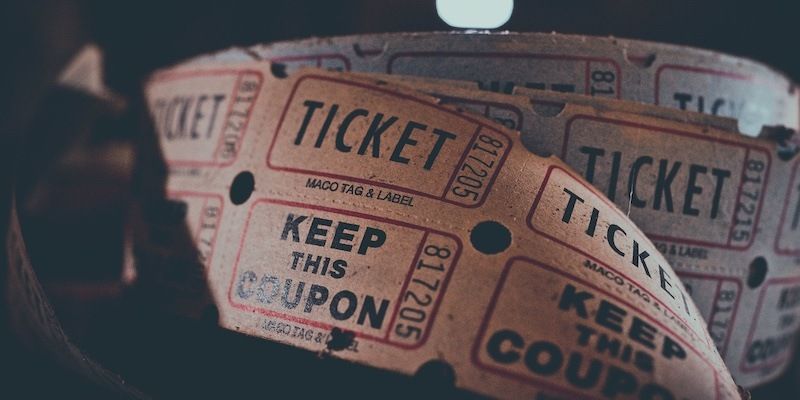Authenticity Coaching: 13 Assessments, Scales, & Worksheets
 Authenticity is being true to ourselves and living according to our beliefs and values; it is vital to our mental wellbeing.
Authenticity is being true to ourselves and living according to our beliefs and values; it is vital to our mental wellbeing.
Additionally, authenticity is widely recognized as crucial to developing as an outstanding leader (Susing, Green, & Grant, 2011; Jackson, 2019).
While oppressive environments and people can block authentic behavior, coaching can help by forming and maintaining connections and “interdependencies between environment, nature, other and self” (Jackson, 2019, p. 74).
This article explores coaching’s potential to build authenticity in clients through a combination of measurement, feedback, and appropriate interventions (Susing et al., 2011). We offer a toolkit of assessments and worksheets that support coaches and clients in their search for authenticity.
Before you continue, we thought you might like to download our three Happiness & Subjective Wellbeing Exercises for free. These detailed, science-based exercises will help you or your clients identify sources of authentic happiness and strategies to boost wellbeing.
This Article Contains:
Authenticity Coaching Explained
While there are many definitions and interpretations of authenticity, it is “increasingly recognized as being a vital aspect of leadership” and essential to our overall mental health (Susing et al., 2011, p. 17).
For some researchers, authenticity requires a focus on what is personal; being true to yourself involves identifying and living according to a set of personal standards. For others, authenticity is relational, involving multiple parties committing to an appreciation of each other’s strengths and weaknesses (Jackson, 2019).
The relational aspect is particularly vital in coaching, “where the relationship between parties is important, dependent on trust and strengthened by transparency” (Jackson, 2019, p. 66).
However, there is limited academic research on how coaches can help their clients with the concept of authenticity. What research there is typically focuses on the importance of authenticity in the coaching relationship itself, including respect, lack of duress, and being present (Jackson, 2019).
According to Jackson’s (2019) research about women in the workplace, authenticity is often driven by the environment and the individual’s relationship with it, including the following contextual factors:
- Degree of trust
- Deployment of power and politics
- Degree of challenge
- Not taking things for granted
- Being brave and unafraid of failure or being different
Coaching can help us better understand and even reframe that relationship. As one interviewee explained, “it’s having someone to reflect with. […] She [the coach] would help me through what the issue was and what I could do” (Jackson, 2019, p. 69).
After all, “we are born authentic,” the natural state in which we begin life (Joseph, 2019). Authenticity coaching helps balance how we realize our own needs while being around others and, at the same time, meeting the obligations those relationships bring.
Coaching recognizes our potential to be derailed along the authenticity journey and explores how we regain and restore our balance. Doing so asks what it would mean to self-actualize the potential within us (Joseph, 2019).
How Can We Find Our Authentic Self?

Joseph suggests that an authentic life is not one in which we never experience difficulties or upsets; instead, it is one in which we live with a greater degree of presence and understanding, and when we are most ourselves.
One of the essential aspects of building an authentic life is finding a way to remove some of the blockers in our environment and spending more time in nurturing and supportive environments (Joseph, 2019).
The following three steps guide us to understand where we are now and to make more authentic decisions in the future (modified from Joseph, 2019):
- Know yourself
Look deeply within and recognize the barriers (self-imposed or external) that limit or prevent authenticity. Identify ways to remove or lessen them. - Own yourself
Recognize your responsibility for your thoughts, emotions, actions, behavior, and choices you have made (past and ongoing) in life. - Be yourself
Find opportunities to use what you have learned and experience new ways of being yourself in the world.
As Martin Seligman (2011, p. xiii), one of the founders of positive psychology, writes, “authentic happiness comes from identifying and cultivating your most fundamental strengths and using them every day in work, love, play, and parenting.”
Sally Jackson (2019, p. 65) suggests that “authenticity is a genuine presentation of self and congruence between values and actions.” For relationships to be authentic, they must be mutually beneficial, treating one another with respect, without seeking personal gain.
Authenticity, therefore, is being true to ourselves and the situation – and those relationships (Jackson, 2019).
9 Questions to Ask Your Clients
Self-reflection is intrinsic to the self-aware mind and the degree of self-knowledge (Fleming, 2021).
As such, a coach asking questions in a session or a client completing homework can become a valuable exercise in reflecting on the authenticity of thoughts, emotions, and behavior. Consider the following questions and prompts (modified from Joseph, 2019):
Relationship authenticity
Ask the client to think of three important relationships in their life, such as with a partner, child, parent, or colleague.
Request that they consider the following questions for each relationship:
- Is this relationship meaningful and valuable to you?
- Have you freely chosen to be in this relationship?
- Can you truly be yourself in the relationship?
- Do you feel valued in this relationship?
Depending on how clients answer each question (individually and taken together), they may recognize that some relationships are toxic and prevent them from being themselves.
True to yourself
Joseph (2019) offers several simple yet powerful questions to encourage self-reflection and help an individual recognize when they are most authentic.
Ask the client:
- When do you feel most true to yourself?
They may answer ‘When I am walking along the beach alone,’ or ‘When I am on vacation with my family.’
There are no wrong answers.
- When do you feel that you cannot be real?
Responses may include examples such as, ‘On a Sunday night when I know I have a difficult workday ahead.’
- What would you like to do less/more of?
The individual should see the answers as a guide for finding their most authentic life.
The five reasons
Ask your client to think of a situation that hasn’t gone well for them recently. Perhaps it was a presentation or a job interview.
Ask them:
- What was the reason the situation went poorly?
Repeat the following question until they arrive at five or more reasons:
- What other reasons are there?
Such self-examination can be difficult, often uncovering our failings and insecurities. Yet digging deeper leads to a more authentic understanding of what we did and did not do in each situation and practical suggestions regarding how we could be different in the future.
Top 6 Authentic Self Exercises & Worksheets

Try out the following yourself or with your clients.
Visualizing Future Events to Build Authenticity
The Visualizing Future Events to Build Authenticity exercise is a valuable way to review future events and avoid unhelpful or damaging behavior (Joseph, 2019).
Authenticity can sometimes be about finding ways to be yourself and who you wish to be, rather than letting the situation run away with itself.
Running through a situation before it happens can help your clients prepare themselves for what is ahead and note the obstacles to overcome while remaining true to themselves.
Writing Your Mission Statement
Like organizations, individuals can benefit from creating and refining mission statements that capture what they stand for and what they aim to do (Joseph, 2019).
While most of us may have a vague notion of our mission in life, it can be helpful and productive to capture it on paper or digitally and regularly return to it to see if we’re remaining faithful to it.
The Writing Your Mission Statement exercise uses a series of questions to reflect on your client’s values and aims, and define their mission statement in the following form:
I will [action] for [audience] by [skills] to [desired result or outcome].
For example,
I will create fascinating podcasts for people interested in psychology to apply science-based learning in their everyday lives.
How Joined Up Is Your Life?
Authentic people typically spend more time doing the things they genuinely love. They are also open to new experiences and do things in life that make them feel most alive (Joseph, 2019).
Ask your client to complete the How Joined Up Is Your Life? worksheet to better understand their interests and strengths (Joseph, 2019).
Ask your clients what they currently do with their lives, and then consider:
How much of your time do you engage in what you are passionate about?
How often are you using your skills and strengths?
Friendship Expectations
Having open and nurturing relationships is vital to mental health and fundamental for developing authenticity. “Unconditional, genuine and empathic” relationships are not always expected, but when we find them, they should be nurtured (Joseph, 2019, p. 183).
The Friendship Expectations worksheet helps clients consider their expectations of friendships.
Friendships that lack the positive qualities we seek may be controlling and harmful. We feel pressured to belong and behave inauthentically.
Relationship Authenticity Checklist
Sometimes it is helpful to perform an audit on whether you treat yourself and others authentically. If you don’t, it is time to consider how you could change things in the future.
Ask your client to complete the Relationship Authenticity Checklist to identify if they are authentic with themselves and others.
Being authentic requires courage, to be yourself and let others be who they are (Joseph, 2019).
Relationship Audit
There are times when we fail to notice our degree of authenticity with others.
Use the Relationship Audit worksheet with your client to review a particular relationship in terms of authenticity. Your client’s answers can provide a strong indication of how authentic they are with that person.
Authenticity Assessments, Questionnaires, & Scales
Measurement offers insights and direction regarding what we need to change.
Authenticity Scale
In a review of authenticity measures, Susing et al. (2011) found that few psychological instruments score authenticity on its own.
However, the Authenticity Scale measures three factors underlying authenticity and as a whole (Wood, Linley, Maltby, Baliousis, & Joseph, 2008; Susing et al., 2011):
- Self-alienation
- Authentic living
- Accepting external influence
Answers to the 12 prompts that make up the Authenticity Scale can be given on a 7-point Likert scale that ranges from 1 (does not describe me) to 7 (describes me very well).
Here are some examples:
“I think it is better to be yourself than to be popular.”
“I don’t know how I really feel inside.”
“I am true to myself in most situations.”
“I feel out of touch with the ‘real me.’”
The complete list and scoring guidance are available here.
The questionnaire can be used for self-reporting authenticity and peer-review purposes.
How happy/authentic are you?
In Authentic: How to Be Yourself and Why It Matters, Joseph (2019) shares the 12-point questionnaire below.
| Statement | Scoring |
|---|---|
| I felt dissatisfied with my life. | Never (3), Rarely (2), Sometimes (1), Often (0) |
| I felt happy. | Never (0), Rarely (1), Sometimes (2), Often (3) |
| I felt cheerless. | Never (3), Rarely (2), Sometimes (1), Often (0) |
| I felt pleased with the way I am. | Never (0), Rarely (1), Sometimes (2), Often (3) |
| I felt that life was enjoyable. | Never (0), Rarely (1), Sometimes (2), Often (3) |
| I felt that life was meaningless. | Never (3), Rarely (2), Sometimes (1), Often (0) |
| I felt content. | Never (0), Rarely (1), Sometimes (2), Often (3) |
| I felt tense. | Never (3), Rarely (2), Sometimes (1), Often (0) |
| I felt calm. | Never (0), Rarely (1), Sometimes (2), Often (3) |
| I felt relaxed. | Never (0), Rarely (1), Sometimes (2), Often (3) |
| I felt upset. | Never (3), Rarely (2), Sometimes (1), Often (0) |
| I felt worried. | Never (3), Rarely (2), Sometimes (1), Often (0) |
Scores of 18 or below suggest you or your client may be experiencing problems with life right now, while 28 and above suggest wellbeing is relatively high.
Joseph (2019) does not suggest that this is a direct measurement of authenticity. Instead, the results show that those who score well are most likely to feel that they can be themselves; use their strengths and talents; and feel a sense of agency, autonomy, and being true to themselves (Joseph, 2019).
PositivePsychology.com’s Useful Resources
We have plenty of tools and worksheets throughout our blog that will help your client recognize their true sense of self and identify values and goals they would like to work toward.
Try out some of the following:
- Self-Awareness Worksheet for Adults
This worksheet features 15 questions prompting insight into your client’s capabilities, traits, and life experiences. - Who Am I?
This worksheet invites clients to discover who they are by considering how others and different temporal versions of themselves might respond to questions about their identity. - Your Core Values Worksheet
This worksheet presents a list of values and an exercise to help clients drill down and clarify which values are most central to their identity. - Setting Valued Goals
This worksheet invites clients to reflect on their personal values and begin living into these in a more purposeful, satisfying way.
If you’re looking for more science-based ways to help others develop strategies to boost their wellbeing, this collection contains 17 validated happiness and wellbeing exercises. Use them to help others pursue authentic happiness and work toward a life filled with purpose and meaning.
A Take-Home Message
Being true to ourselves is not always easy. While it is vital to our mental wellbeing and maintaining and sustaining a sense of who we are, we can become oppressed by our environment and other people (Susing et al., 2011).
When others overshadow or drive our behavior and even our thoughts and beliefs, we can feel inauthentic and exhausted. Listening to our inner voice and owning our actions requires self-knowledge and confidence in who we can become. Only then can we experience fulfillment, connection, and self-actualization.
Authenticity can improve our parenting, learning, and management of toxic relationships and workplaces, and determine our relationships’ quality (Joseph, 2019).
Coaching can help. It provides clarity regarding our values, beliefs, and goals and can help us reflect when we deviate too far from our preferred path. A coach can help us recognize a greater sense of relatedness with those around us and the joy and freedom we find in our lives (Jackson, 2019).
Rather than continuing to put on a façade, the measures, tools, and worksheets contained within this article can help you or your client build authenticity. They encourage a greater and more equal degree of connection with the environment and allow you to drop long-held defenses.
We hope you enjoyed reading this article. Don’t forget to download our three Happiness Exercises for free.
- Fleming, S. (2021). Know thyself. Basic Books.
- Jackson, S. (2019). Coaching women towards authenticity: An appropriate workplace environment. International Journal of Evidence Based Coaching and Mentoring, 17(2), 64–78.
- Joseph, S. (2019). Authentic: How to be yourself and why it matters. Little Brown Book Group.
- Seligman, M. E. (2011). Authentic happiness. Random House Australia.
- Susing, I., Green, S., & Grant, A. M. (2011). The potential use of the Authenticity Scale as an outcome measure in executive coaching. The Coaching Psychologist, 7(1), 16–25.
- Wood, A. M., Linley, P., Maltby, J., Baliousis, M., & Joseph, S. (2008). The authentic personality: A theoretical and empirical conceptualization and the development of the authenticity scale. Journal of Counseling Psychology, 55(3), 385–399.
Let us know your thoughts
Read other articles by their category
- Body & Brain (49)
- Coaching & Application (57)
- Compassion (26)
- Counseling (51)
- Emotional Intelligence (24)
- Gratitude (18)
- Grief & Bereavement (21)
- Happiness & SWB (40)
- Meaning & Values (26)
- Meditation (20)
- Mindfulness (45)
- Motivation & Goals (45)
- Optimism & Mindset (34)
- Positive CBT (28)
- Positive Communication (20)
- Positive Education (47)
- Positive Emotions (32)
- Positive Leadership (18)
- Positive Parenting (4)
- Positive Psychology (33)
- Positive Workplace (37)
- Productivity (16)
- Relationships (46)
- Resilience & Coping (36)
- Self Awareness (21)
- Self Esteem (38)
- Strengths & Virtues (31)
- Stress & Burnout Prevention (34)
- Theory & Books (46)
- Therapy Exercises (37)
- Types of Therapy (64)





What our readers think
I’m confused with the Relationship Authenticity Checklist. In the section that is Authenticity with others, shouldn’t the form read, “If Y, what are you going to change going forward?” The tenor of the questions changed and reversed the focus. Please advise.
Hi Laurie,
yes, you are absolutely right. Thank you for pointing this out; we will be changing it as soon as possible 🙂
Warm regards,
Julia | Community Manager